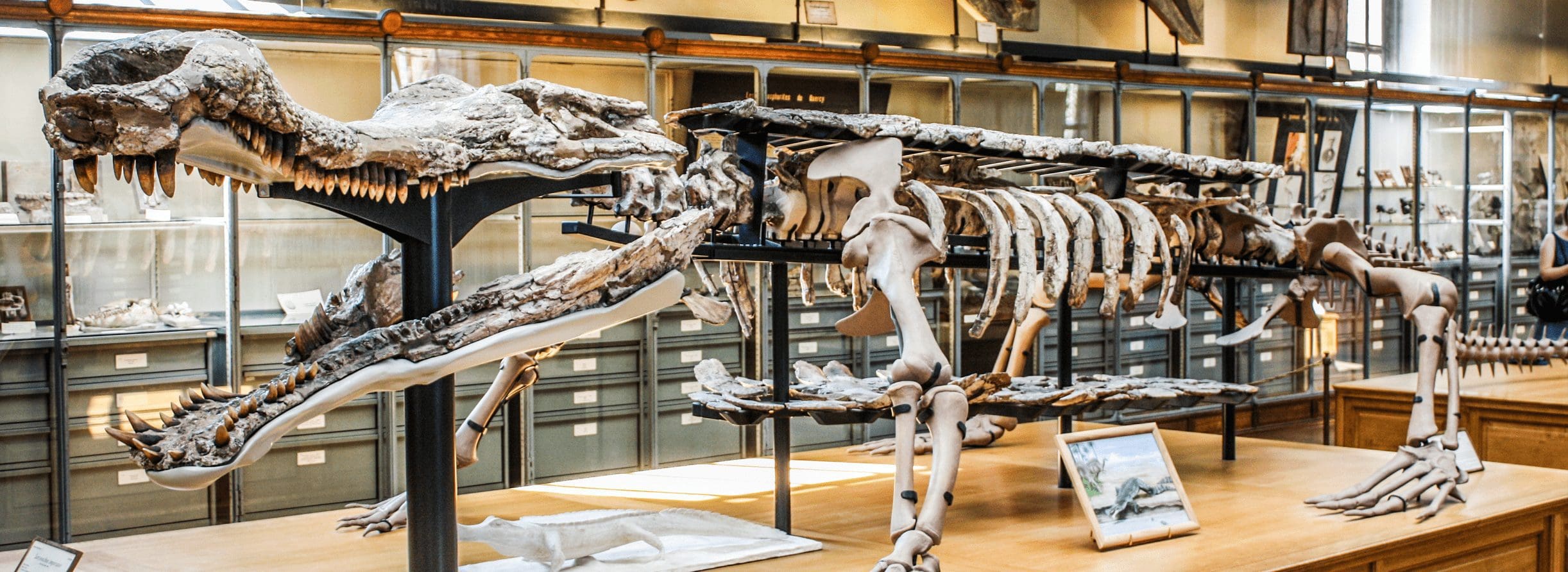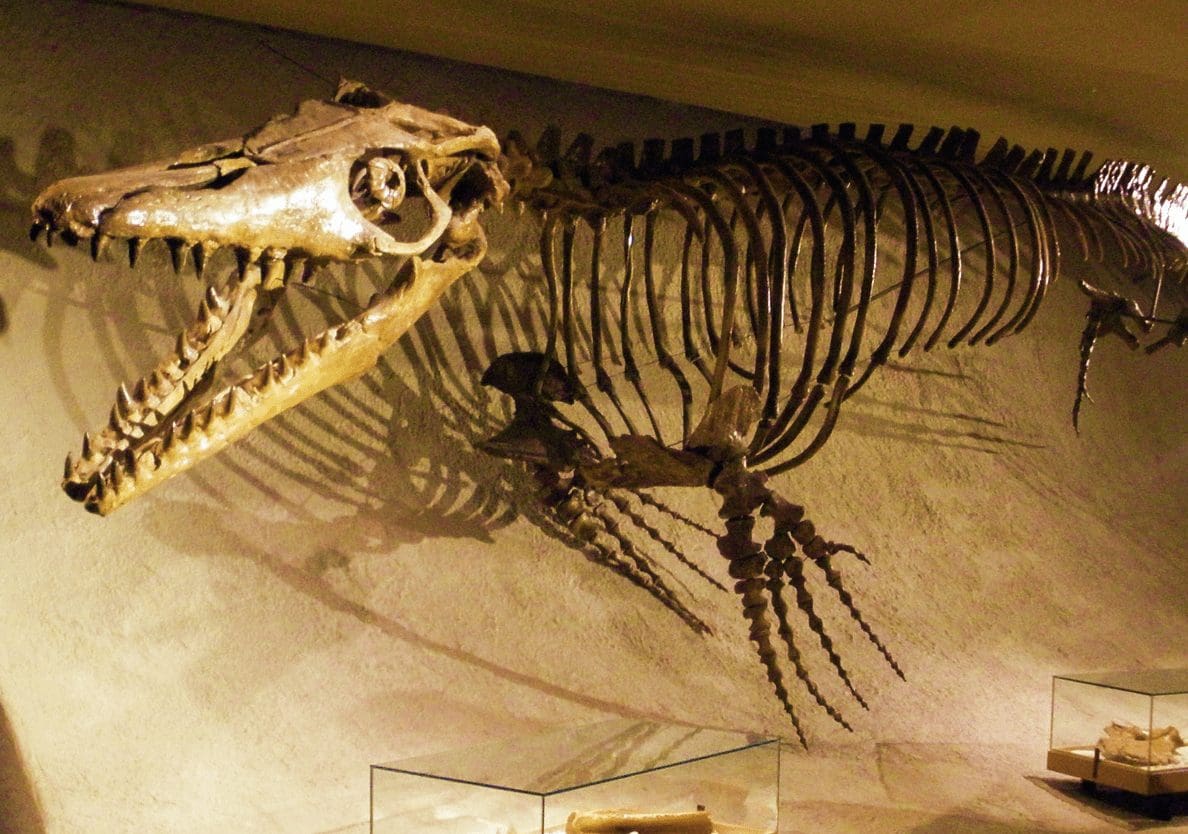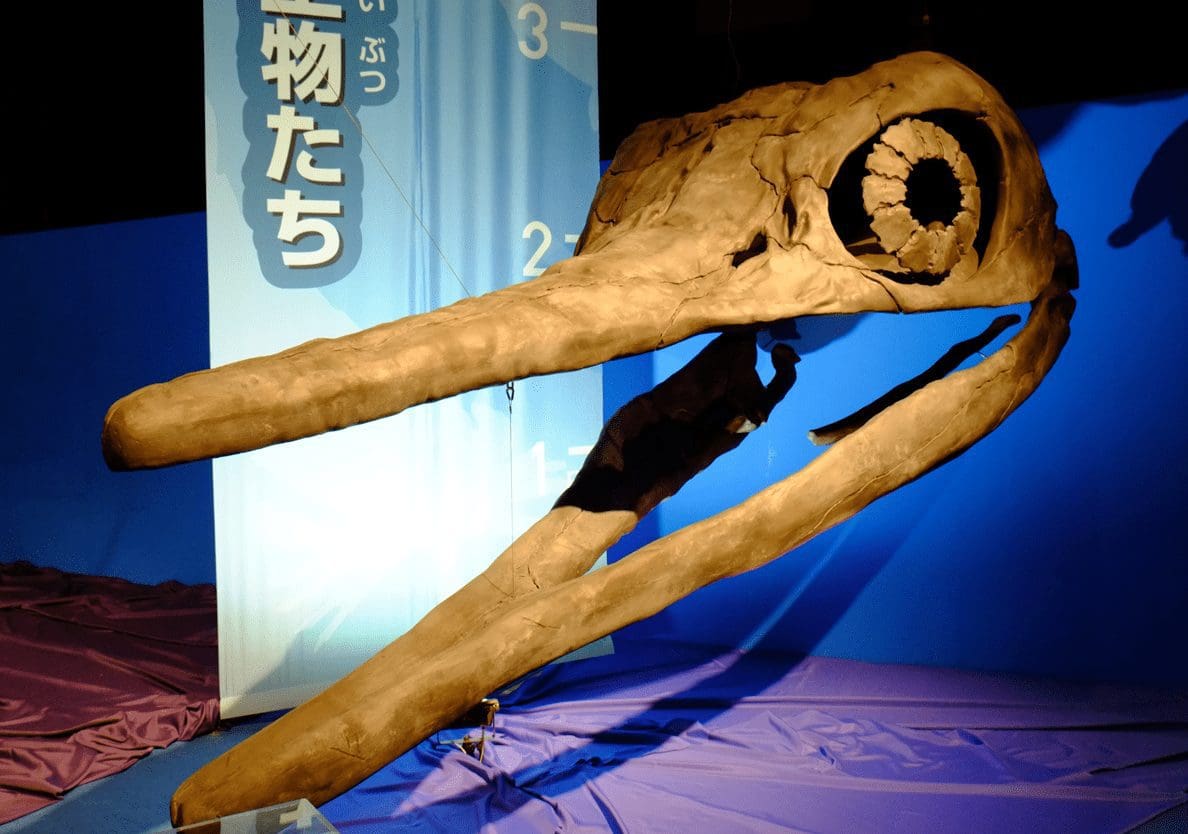While the book of Job is categorized as a book of poetry, Job 41 vividly describes, in scary detail, a monumental monster of the sea known as “Leviathan”. If this Leviathan is indeed a real creature, as the text seems to indicate, and as I firmly believe, then it’s worth exploring the fossil record for some possibilities.
Based upon such a description some believe that some of the now-extinct marine reptiles such as Kronosaurus, Mosasaurus, Shonisaurus, or Styxosaurus would make good candidates. The sizes of their body and their bite certainly make them worthy possibilities. Indeed, these mammoth sea monsters ranged in size from 30-50 feet in length, weighed up to ten tons, and all sported massive jaws and teeth.
“Discovered in 1964 in the Sahara desert, was the fossil of a colossal crocodile which they dubbed Sarcosuchus.”
There is, however, one detail regarding Leviathan which doesn’t seem to fit the behaviour of such sea-dwellers. Job 41:30 tells us that this animal often left “a trail in the mud like a threshing sledge.” Its hard to imagine a sea-dwelling creature spending time in the mud and this may be one of the reasons why many commentators identify Leviathan with the common crocodile. Not only do these semiaquatic reptiles like to spend time in the mud, but the scales on their backs could rightly be described as “rows of shields” (v.15). However, while they do make for difficult hunting, they are, nevertheless, successfully caught on a daily basis. But God makes it absolutely clearly that Leviathan was uncatchable.

Sarcosuchus, Museum of Natural History
But all may not be lost. Discovered in 1964 in the Sahara desert, was the fossil of a colossal crocodile which they dubbed Sarcosuchus (meaning “flesh-eating crocodile”). This “super croc” was as long as a school bus, and, when alive, would have weighed up to eight tons! This is twice as large as the largest crocs living today which certainly “puts it in a vastly different league.”[1] As with Leviathan, its six foot (almost two meters) long mouth was also “ringed about with fearsome teeth” (v.14)—more than 100, in fact (which one researcher described as “railroad spikes”).[2] And the scutes (or scales) of this killer croc were each about a foot long, closely overlapping one another just like Leviathan’s “rows of shields tightly sealed together” (v.15).


Another fascinating feature is a round, bony protrusion in the tip of its snout, “which housed a large, bowl-shaped cavity called a ‘bulla’.” Scientists aren’t sure what function it served but could it have had something to do with the production of smoke and fire?[3] Is the description of Leviathan as a fire-breather (v.18-21) merely poetic? One thing we do know from the Bombardier beetle, which can ignite a lethal chemical spray up to 100°C, is that such a feature is biological possible.
So is Sarcosuchus the dreaded Leviathan? God only knows.

Ryan Hembree is a daily co-host, speaker, and writer of Bible Discovery. He also hosts a YouTube channel that shows the unity of the Bible and how science and Scripture fit together. Ryan also has an honorary Masters of Ministry in Creation Science from Phoenix University of Theology.






